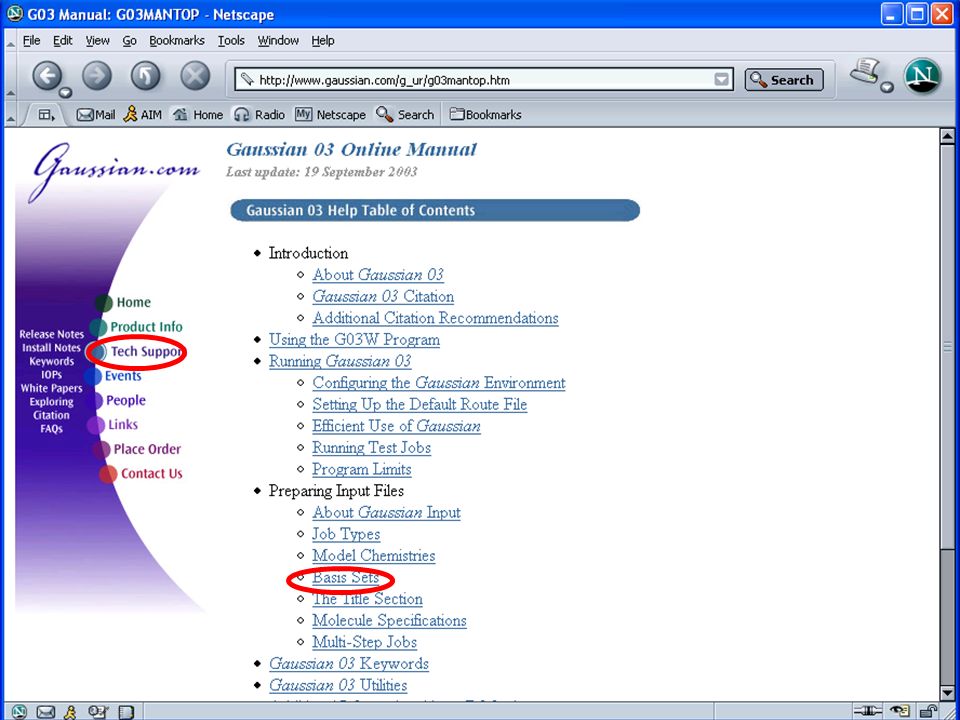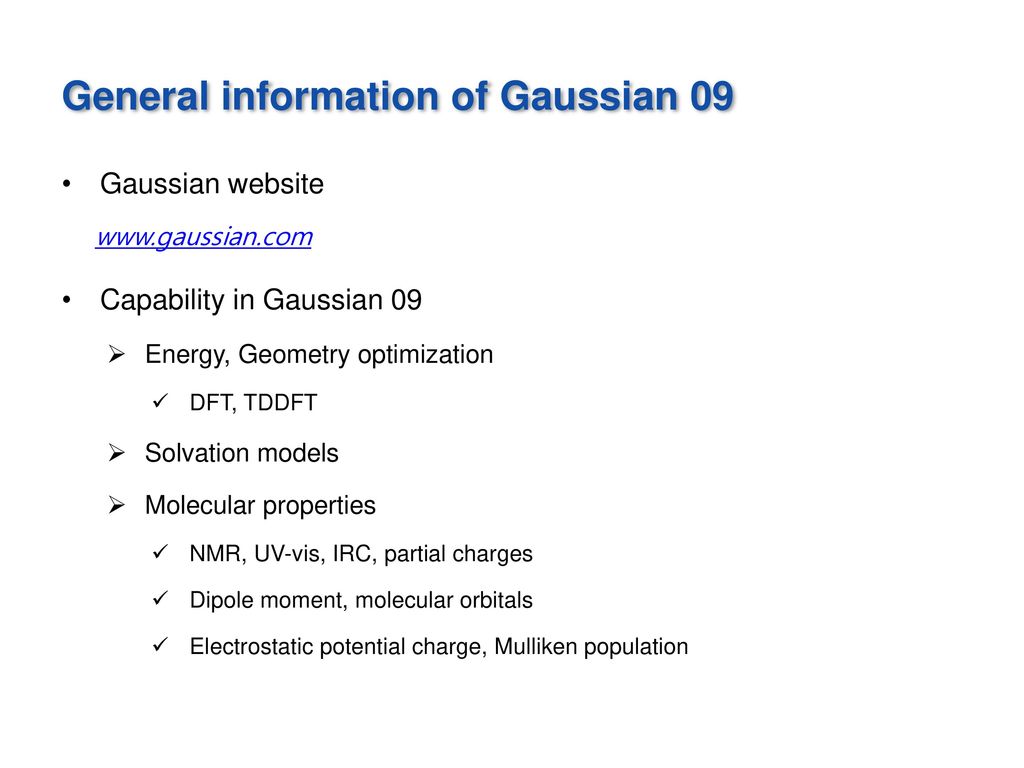

the amount of memory ( %mem) and the number of CPU cores ( %nprocshared). For real calculation, always consider the resources you need, i.e.

The example above is exceedingly trivial only to show the essential parts of a Gaussian input file. ¶ Practical Advice for Multi-core Calculations The g09slurm script will determine how many cores to request when submiting the job to SLURM. On Wahab, choose N between 1 and 40 (inclusive endpoints), and on Turing, between 1 and 32. Please add a %nprocshared=N link 0 command (near the top of the file, with other link 0 command lines) to specify the number of cores you want to use. Many computational methods in Gaussian can be run using multiple cores in shared-memory parallelism to speed up the computation. It is typical that Gaussian calculations take a long time to finish, especially if you are dealing with either a very large molecule (say, with 100 or more atoms) or complicated methods (e.g. ¶ Parallel Computation Using Multiple Cores You can use UNIX command grep to examine how the total energy changed in the course of the optimization: $ grep E.RHF H2O_opt_RHF_cc-pVDZ.out The initial H-O-H angle was 110.56 degrees, the final one was slightly smaller. GradGradGradGradGradGradGradGradGradGradGradGradGradGradGradGradGradGradĬenter Atomic Atomic Coordinates (Angstroms)Įxamine how the atom shifted due to optimization. Once completed, inspect the output file ( H2O_opt_RHF_cc-pVDZ.out) for the final output, near the end of the file: Optimization completed. Please try to run Gaussian with the input above.

The order of the sections in the input file above must NOT be changed, as well as the number of blank lines that must be included. Gaussian input file follows very strict rules. Additional input lines are possible, depending on your specific computation. Then the rest contains the molecule specification. This must also be followed by exactly one blank line. The next line is the description of the calculation-write something that makes it easy for reader to understand what you are doing. There must be exactly one blank line after this line.
#Gaussian software manual plus#
The line that begins with # indicates which computational method is requested, plus its specifications. Each link 0 line contains a key=value pair. The first two lines above (that begins with the % character) are what called link 0 commands. Let us name this input file H2O_opt_RHF_. H2O RHF with cc-pVDZ basis (geometry optimization) Here is an example input file for geometry optimization of a water molecule using RHF (restricted Hartree-Fock) method and cc-pVDZ basis set: %mem=250MB For example: Suppose you want to optimize the geometry of benzene molecule using B3LYP, then your input file can be benzene_opt_ and the corresponding output file benzene_opt_b3lyp.out. com extension for the input file ( com is short for commands) and either. If you are new to Gaussian, please read the specification of the input file on Gaussian website. Gaussian input file follows a specific syntax. This script submits your Gaussian job to SLURM to run on the main partitions no need to use the sbatch command explicitly. Create the appropriate input file (and additional supporting files as necessary), then invoke: g09slurm INPUT_ OUTPUT_FILE.txt Our team has prepared a script named g09slurm to launch Gaussian calculations on Turing and Wahab. Any method of connection would work (SSH, Wahab terminal on Open OnDemand, or terminal under RDP). You will need to access to the shell on the login node. Please connect to the cluster using following the instructions here: Getting Started. You can run Gaussian on either the Wahab or Turing cluster. Gaussian calculations are meant to run on the batch system. ¶ Running Gaussian ¶ Connecting to the Cluster Gaussian09 is a software licensed to ODU and can only be used for non-commercial, academic research purposes by ODU community members. It provides state-of-the-art capabilities for electronic structure modeling. Gaussian09 is the latest version available on ODU Wahab and Turing clusters. It has been continuously updated since then. It is released in 1970 by John Pople and his research group at Carnegie-Mellon University as Gaussian 70. Gaussian provides various ab initio and semiempirical quantum chemistry methods as well as molecular mechanics to predict energies, molecular structures, spectroscopic data (NMR, IR, UV, etc) and much more.

Gaussian is a suite of computational chemistry programs used by chemists, chemical engineers, biochemists, physicists and other scientists.


 0 kommentar(er)
0 kommentar(er)
